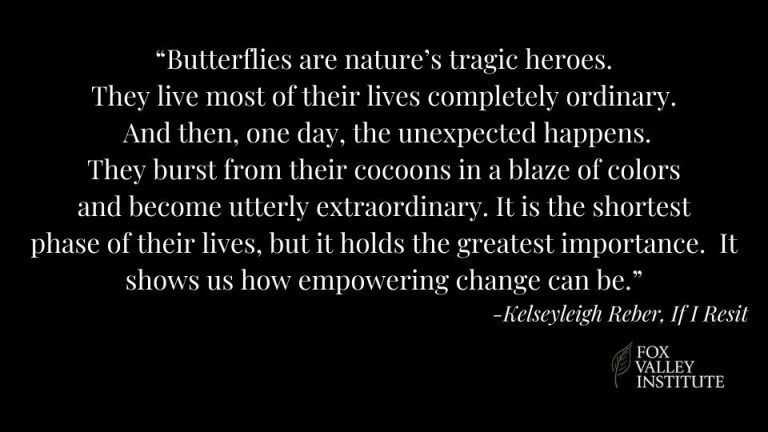Do you desire to change something in your life?
Understanding your past can lead to a wonderful and positive change.

Amy came to see me because she and her spouse were separated. Amy is a mature woman who retired from a major corporation and was consulting from her home. When I asked about her concerns and about her support network, she hesitated. She told me if someone calls, she might pick up the phone, but she doesn’t call others. Also, her husband used to complain because if they had a disagreement, she wouldn’t talk to him for weeks. I noted the avoidant behavior.
She shared with me that while she was growing up, her alcoholic father would yell and hit her and her brothers. During these years, she could never affect the outcome of anything in her life. She either ran too slowly to get him a beer or ran too fast to get him a beer, nothing was ever good enough. It was a feeling of having absolutely no control.
Amy and I discussed how she sometimes would be punished by her father for something that happened when she hadn’t even been present! But it didn’t matter. She learned to go inside herself. She learned to just be silent. She shared with me she learned to “cocoon.” Like a chrysalis, that protects the caterpillar or pupa until it is time to emerge as a new and beautiful butterfly, she could not let anyone in, nor could she venture out. She had to survive. She had to insulate and protect herself. She learned how to maneuver through life in her early years by just “cocooning.” One reason a cocoon is built is for protection from predators, and the chrysalis will disguise itself by changing its color to the color of whatever is behind it. She learned she could not allow herself to be exposed or to be vulnerable.
At another session, Amy shared with me a memory from seventh grade when she desperately wanted to join this group of popular girls. She told me they turned to her and asked, “Why would we ask you to join? You don’t talk.” She did not know how to share. She did not feel it was safe. She did not believe she could open to potential danger. As we progressed with therapy, Amy said she began to realize when “cocooning” was not helpful. It resulted in her feeling lonely. She became aware of how it was detrimental to her marriage when she would not talk to her husband. She felt she needed to continue to protect and avoid, as opposed to, communicating directly and connecting with her husband. She felt unsafe. “Cocooning” felt safe. Her husband felt she did not want to be with him because she was always shutting him out and protecting herself.
We discussed ways to recognize when the old pattern would appear. The “fight or flight or freeze” part of her brain (the Amygdala) would be triggered, and she had an emotional and physical response to perceived threat or danger. Her heart rate would increase, neck and shoulder muscles would tighten, her stomach would hurt, she might experience shallow breathing: all signaling the need for protection, and she would shut down and go inside herself. She learned to recognize her heightened physiological response and ask some questions.
When was it needed? And when was it not necessary to protect herself?
Do I need to cocoon, or can I break out of my cocoon and maybe fly?
Learning to keep her physiological state low with steady breathing, a low pulse rate, and relaxed muscles, enabled her to approach her husband with gentleness and opened a new pattern of connecting for them. This helped her to feel safe and secure. This helped him to feel desired. A deeper level of intimacy emerged.
Like a butterfly, crawling out of a cocoon, her wings began to spread, the blood flowed into them, and she was able to begin to fly.
Awareness of our past is beneficial if it leads to positive behavioral change.
Realizing the consequences of continuing with her childhood belief that she needed to constantly protect herself, led her to examine her adult thoughts and actions. How did they affect her friendships? How did they affect her marriage? This made a huge difference in Amy’s life. She now hosts a Book Club, Bunco night, and regularly calls friends for lunch dates. We continued to meet. Her husband spent time with his individual counselor, and then both spent time with a couples counselor. They are back together and interacting very differently. Amy shares her feelings with her spouse now, allowing herself to be vulnerable. This results in a closer emotional connection. He is less reactionary, creating a safe place for her to land which draws her to him as opposed to pushing her away. They know they matter to each other and will respond with tenderness, respect, and love. As a caterpillar changes into a beautiful butterfly, a renewed sensitive relationship evolved along with a self-assured, accessible, and happy woman.
Being aware of and understanding our past can lead to drastic and positive change.
It happens regularly in my office.

Suzanne W. Keenon, MA, LCPC
Suzanne W Keenon can be reached at 630-718-0717 ext 240 or at suzanne@fvinstitute.com. For immediate assistance to schedule an appointment, please connect with one of our Client Care Specialists at 630-718-0717, ext. 240.
Additional Resources:
https://fvinstitute.com/a-roadmap-for-putting-your-marriage-back-on-track/
https://fvinstitute.com/make-the-stress-of-mothering-less-smothering/
https://fvinstitute.com/staying-together-create-healthy-committed-relationship/
https://fvinstitute.com/working-relationship/
https://fvinstitute.com/breaking-hard/
https://fvinstitute.com/truth-and-honesty-in-our-relationships/
https://fvinstitute.com/enhancing-your-emotionally-committed-relationship/
https://fvinstitute.com/a-way-to-understand-relationship-conflicts/
https://fvinstitute.com/looking-for-love-in-all-the-right-places/
https://fvinstitute.com/manipulation-in-relationships/
https://fvinstitute.com/emotional-unavailability/
https://fvinstitute.com/understanding-marital-conflict-can-help-make-resolving-quarrels-easier/
https://fvinstitute.com/deepen-connection-partner/



